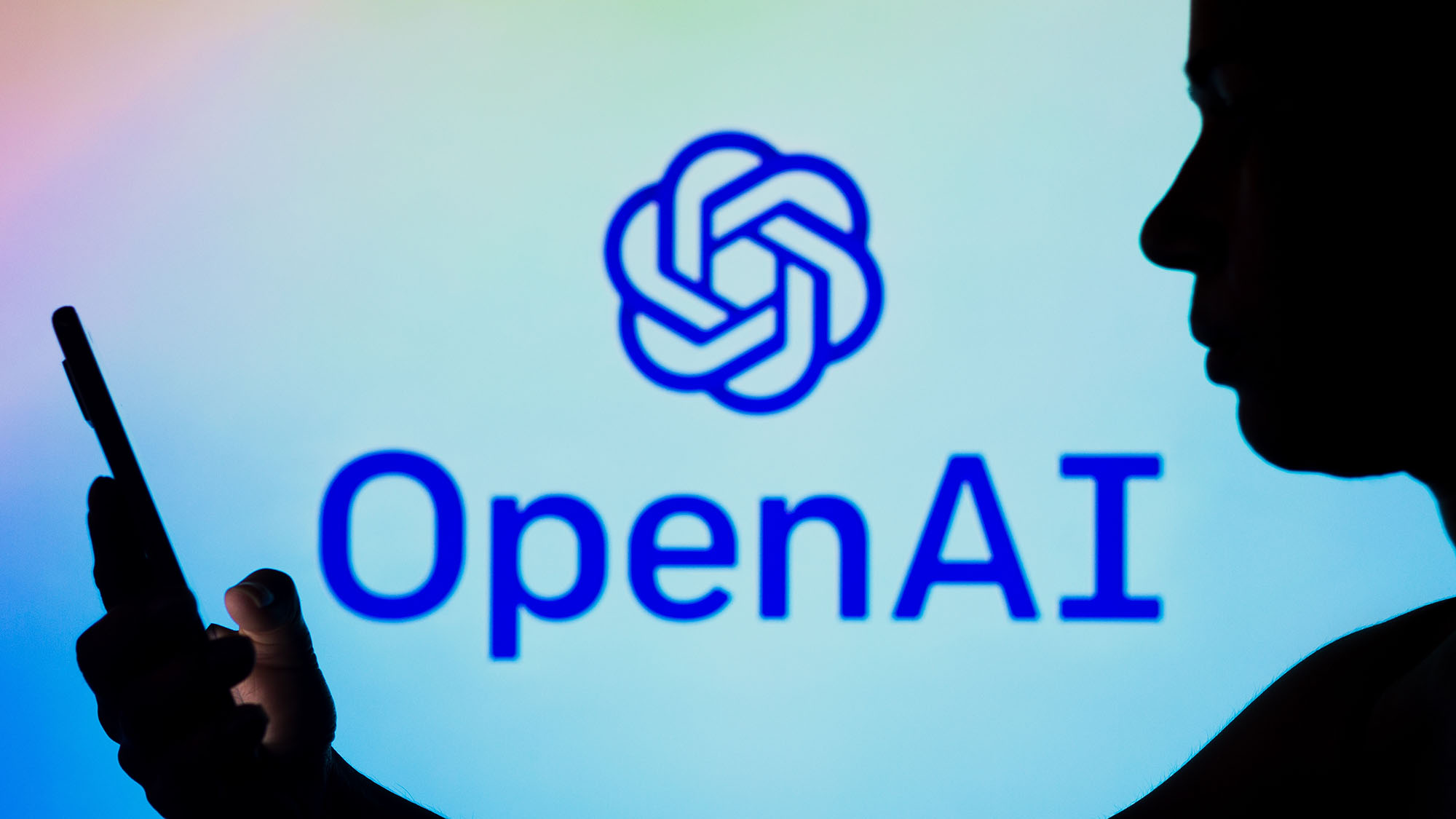I compared the Pixel 8 Pro vs iPhone 15 Pro Max vs Galaxy S23 Ultra in a low-light camera shootout — here's the winner
You'll see how well Night Sight works
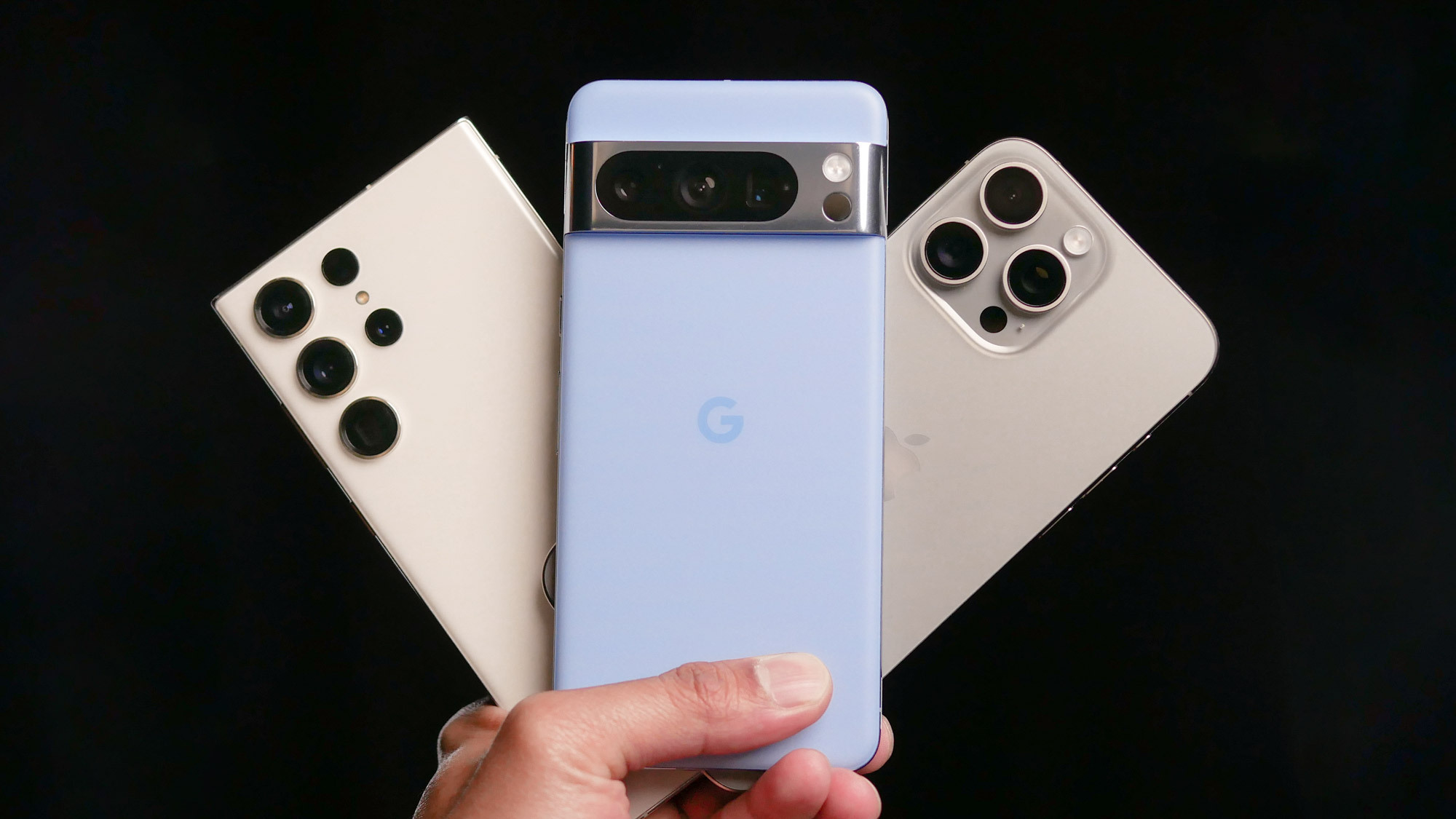
Google helped to establish night time photography with the launch of the Pixel 3 and Pixel 3 XL in 2018. Since then, the series has been tweaked in various ways to make low light photos even better with each successive release. With its latest flagship launched, the Pixel 8 Pro, it’s time to see how Night Sight mode stacks up against the competition.
Two of its direct rivals are the Samsung Galaxy S23 Ultra and Apple iPhone 15 Pro Max, which are formidable in every way when it comes to capturing photos and video. Both are so good that they top our list of the best camera phones. While this takes into consideration their overall camera performances, you’ll be surprised how they actually stack up against the new Pixel 8 Pro.
I took all three flagship phones and tested them out to see which one delivers the best results with their respective night time modes. Frankly, I often feel that a camera phone’s performance often boils down to how they perform in this area because — let’s face it — low light performance can define the good from the best.
For more comparisons, see our Pixel 8 Pro vs iPhone 15 Pro Max vs Galaxy S23 Ultra zoom shoot-out.
Down by the water
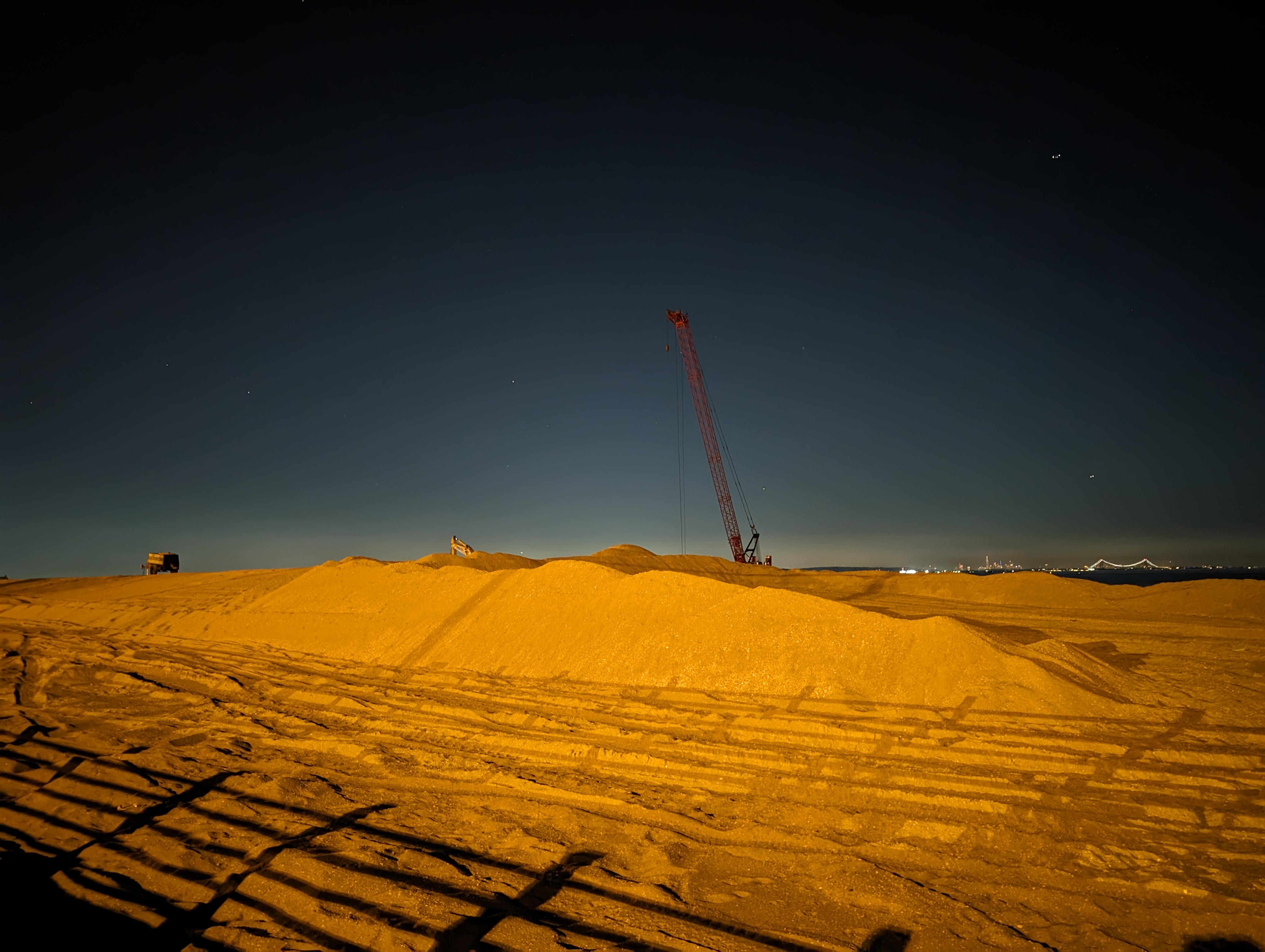

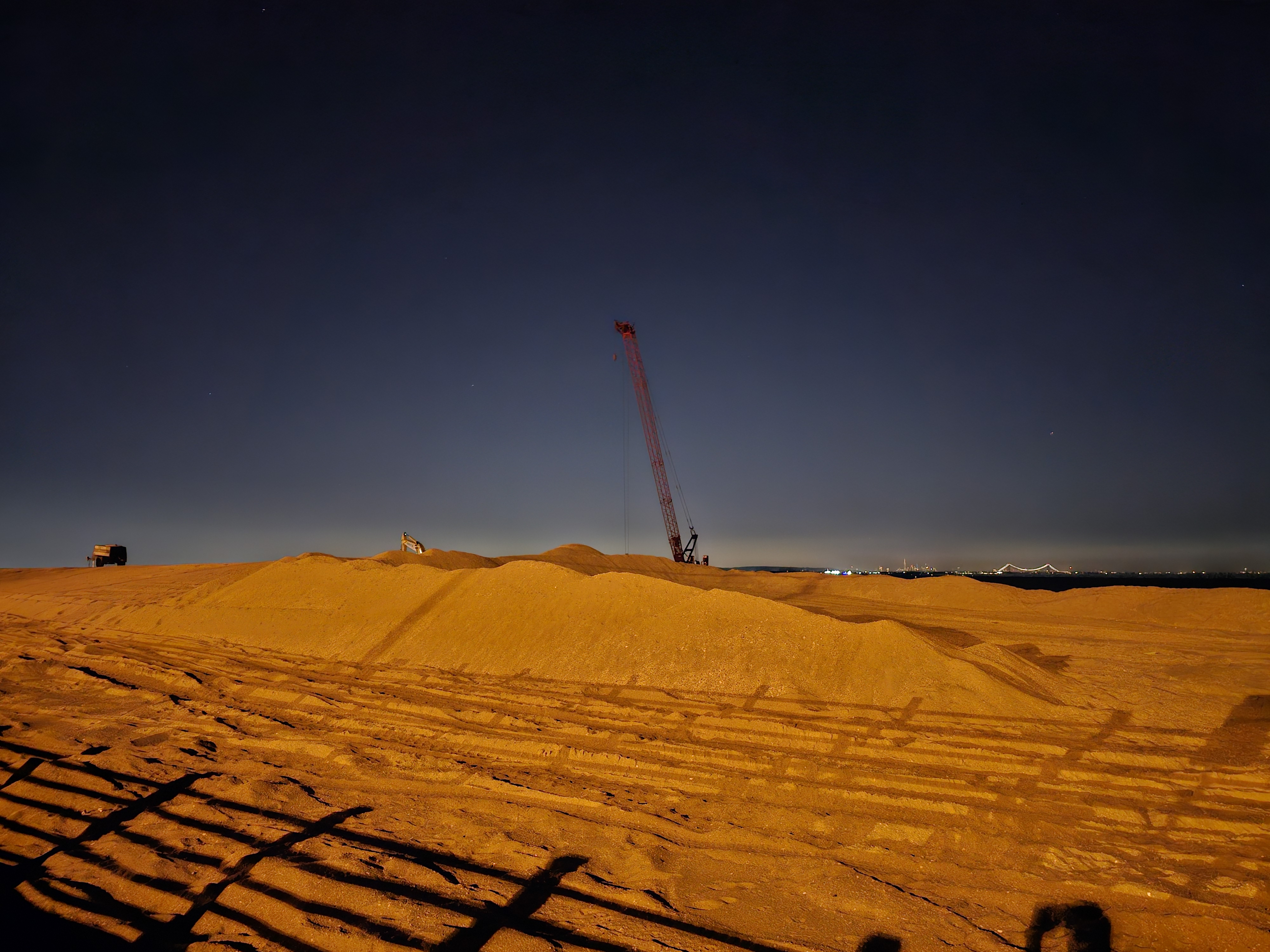
This first night time shot at the beach boardwalk has a lot going on, with a hulking crane smacked in the middle and New York’s iconic skyline in the background. Out of the three, I think the Pixel 8 Pro does it the best — balancing out the details and color temperature, without introducing too much noise into the shot.
Meanwhile, the iPhone 15 Pro Max produces a bright pic with more detail in that first dune, but it over saturates the colors so much that the sand has this orange hue to it. There’s also a more pronounced banding effect that emanates from the light in the horizon, and the stars look blurry. The Galaxy S23 Ultra’s photo has a little more noise, but I think its color temperature is more realistic because the sky has a more bluish tone — versus the Pixel 8 Pro’s greenish color.
Winner: Pixel 8 Pro
Sign up to get the BEST of Tom's Guide direct to your inbox.
Get instant access to breaking news, the hottest reviews, great deals and helpful tips.
Low light video performance
I also took all three phones and recorded video at 4K 30 fps of the same scene of the beach with the New York skyline way back in the horizon. The iPhone 15 Pro Max without question delivers the best results, balancing out the exposure without introducing a lot of noise.
What’s interesting here is that it’s able to produce the brightest video despite a 26.62 fps capture rate. That’s notable because the Pixel 8 Pro dropped down to a slower 23.97 fps rate, yet still had the poorest result with it being severely underexposed and noisy. As for the Galaxy S23 Ultra, its low light video performance looks decent, but there’s an over-sharpening effect that makes the video distracting to watch.
Winner: iPhone 15 Pro Max
High contrast back yard
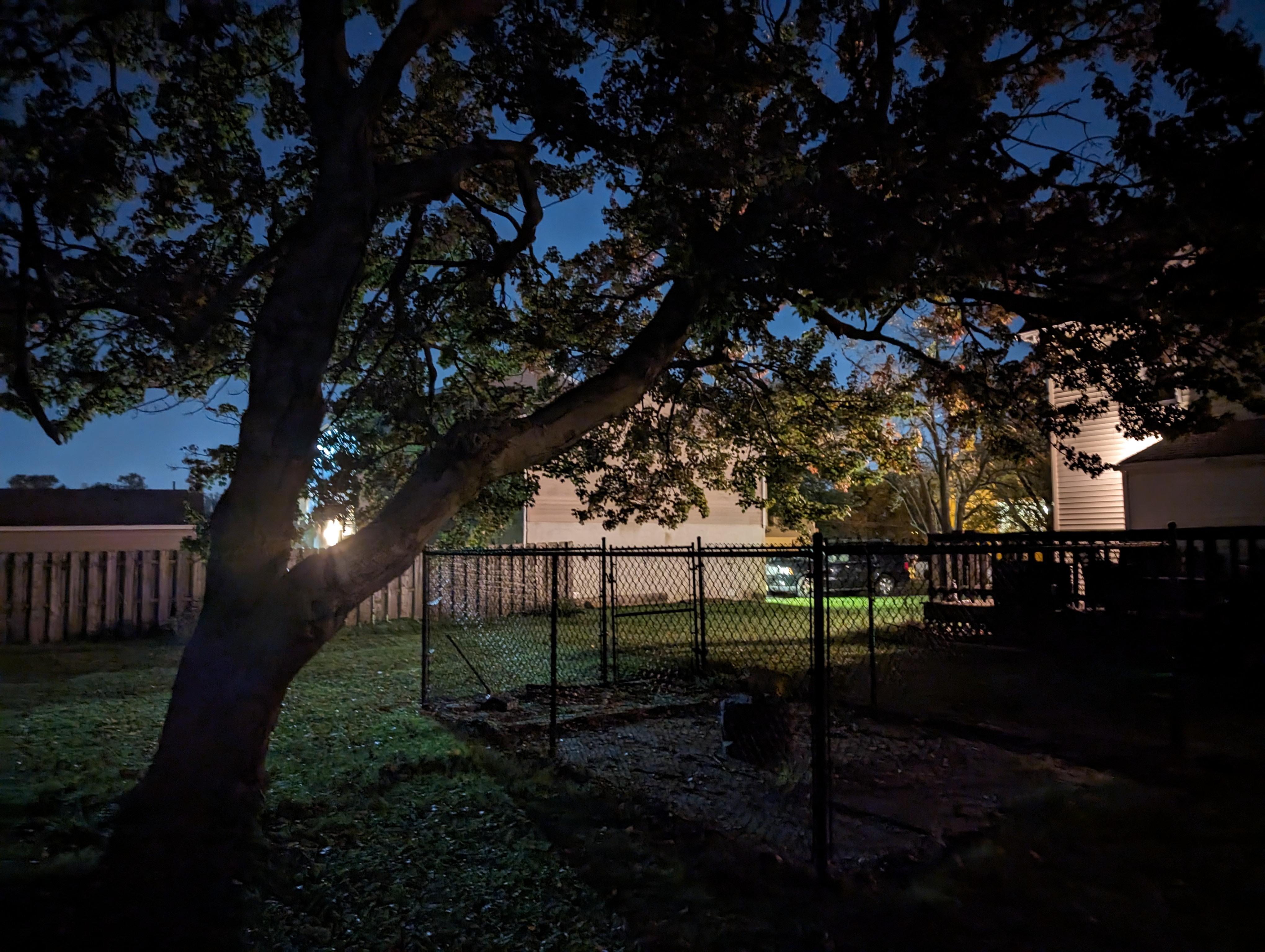
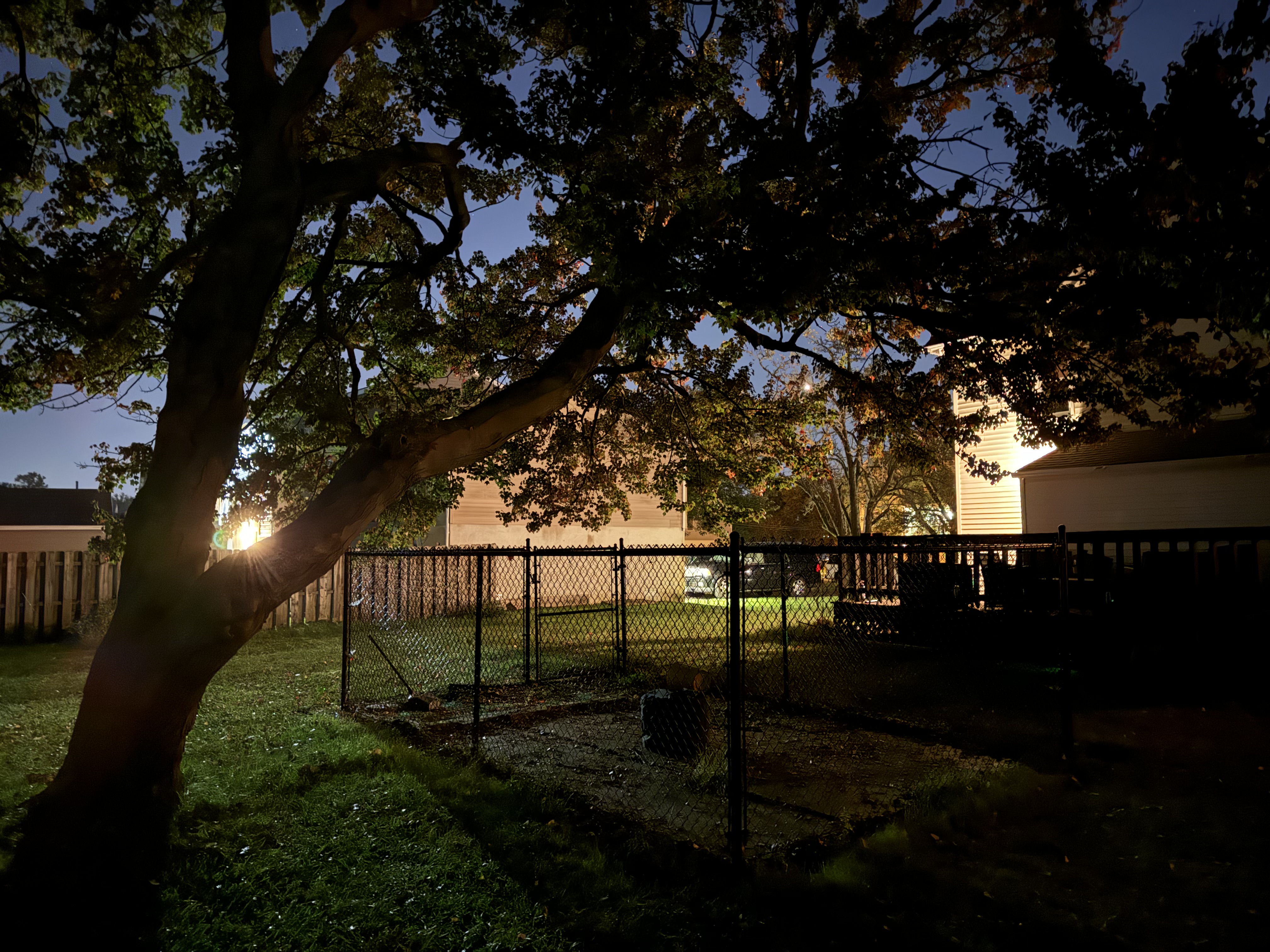
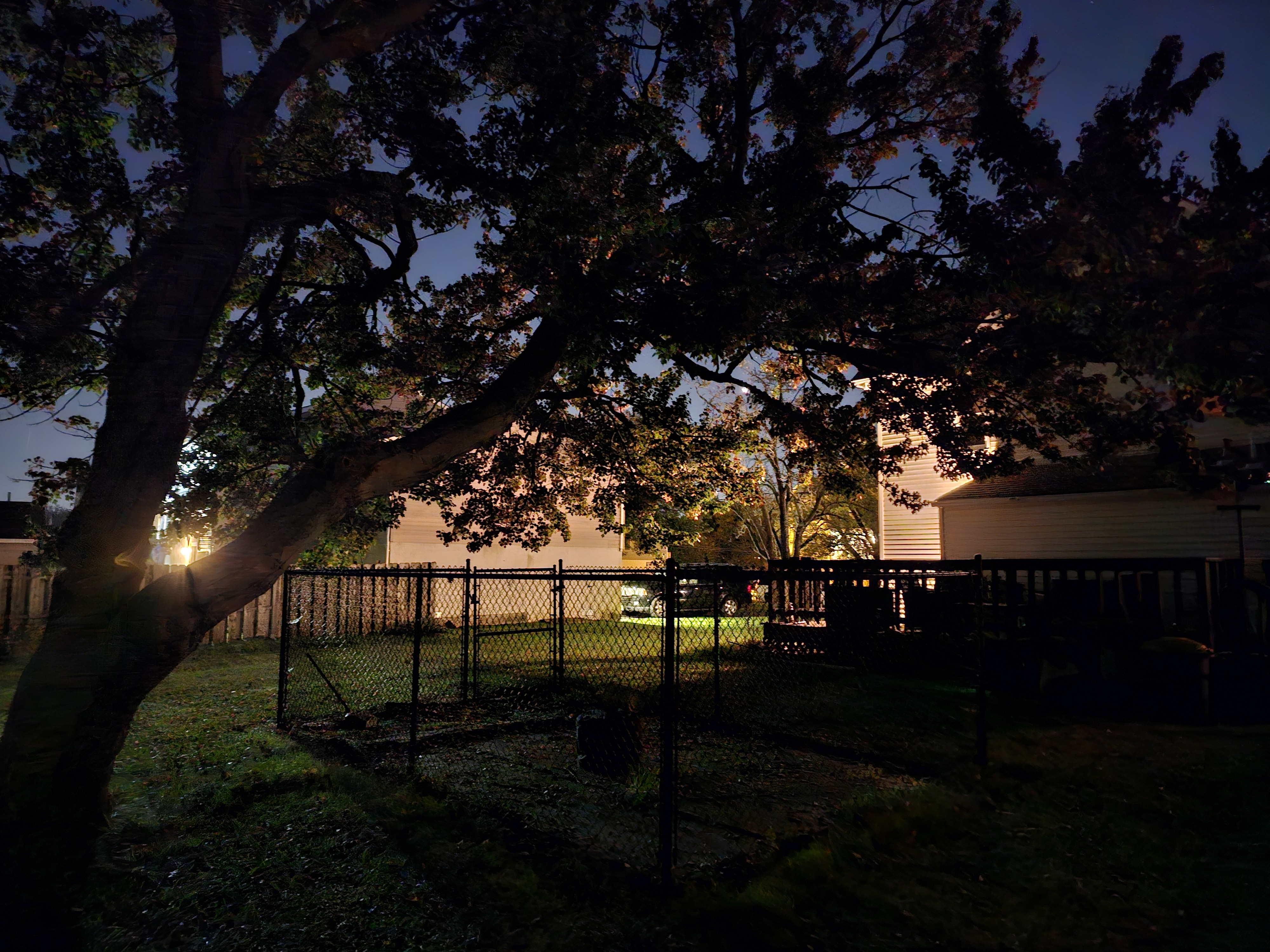
One way to reveal a camera’s dynamic range performance is to capture a high-contrast scene at night, such as the set of photos above with the brightly lit areas of my yard against the silhouette of this tree. The iPhone 15 Pro Max in my opinion delivers the best results, revealing details in the shadows — such as the grass closest to the tree and in the branches.
After that, I would give the Galaxy S23 Ultra the runner up spot because it’s sharper looking overall. It also helps that the grass closest to the tree have much more detail.
I'd say that the Pixel 8 Pro's shot looks pleasant and realistic, but you can see how it's underexposed in parts of the shot. On top of that, details are softer around the tree's bark and branches.
Winner: iPhone 15 Pro Max
Brightly lit CAT wheel loader
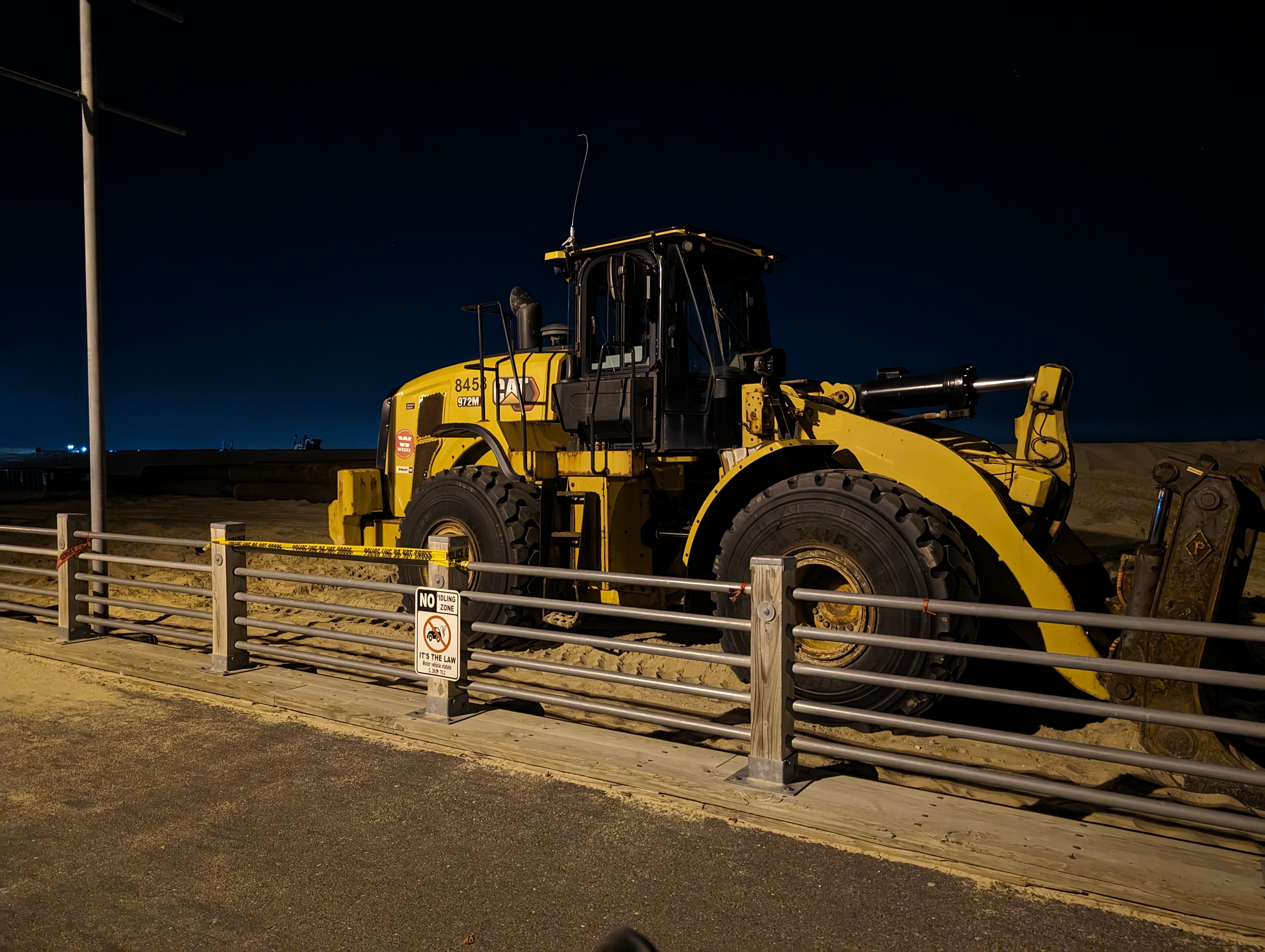

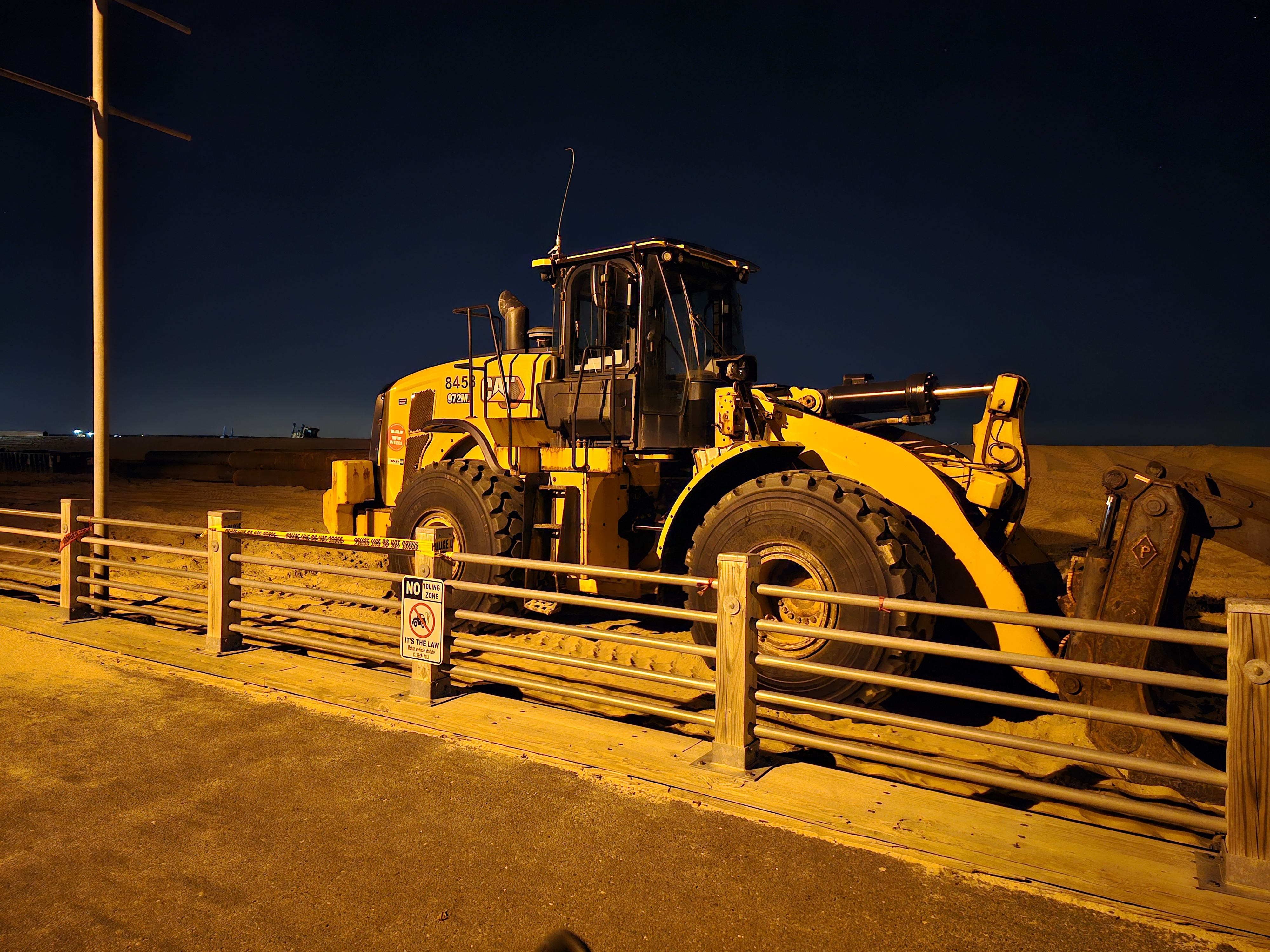
When there’s sufficient lighting around for a night time shot, I think all three phones do a great job of capturing the scene. I prefer the Pixel 8 Pro’s color science in this shot of a CAT wheel loader that lit up nicely by a nearby light pole. Details are excellent, but it produces what I feel is the most true-to-life colors.
Compared to the iPhone 15 Pro Max and Galaxy S23 Ultra, I will say that the Pixel 8 Pro’s image is a smidge underexposed — which is most notable with how the loader’s arm on the right side isn’t as bright.
Winner: Pixel 8 Pro
Extreme low light
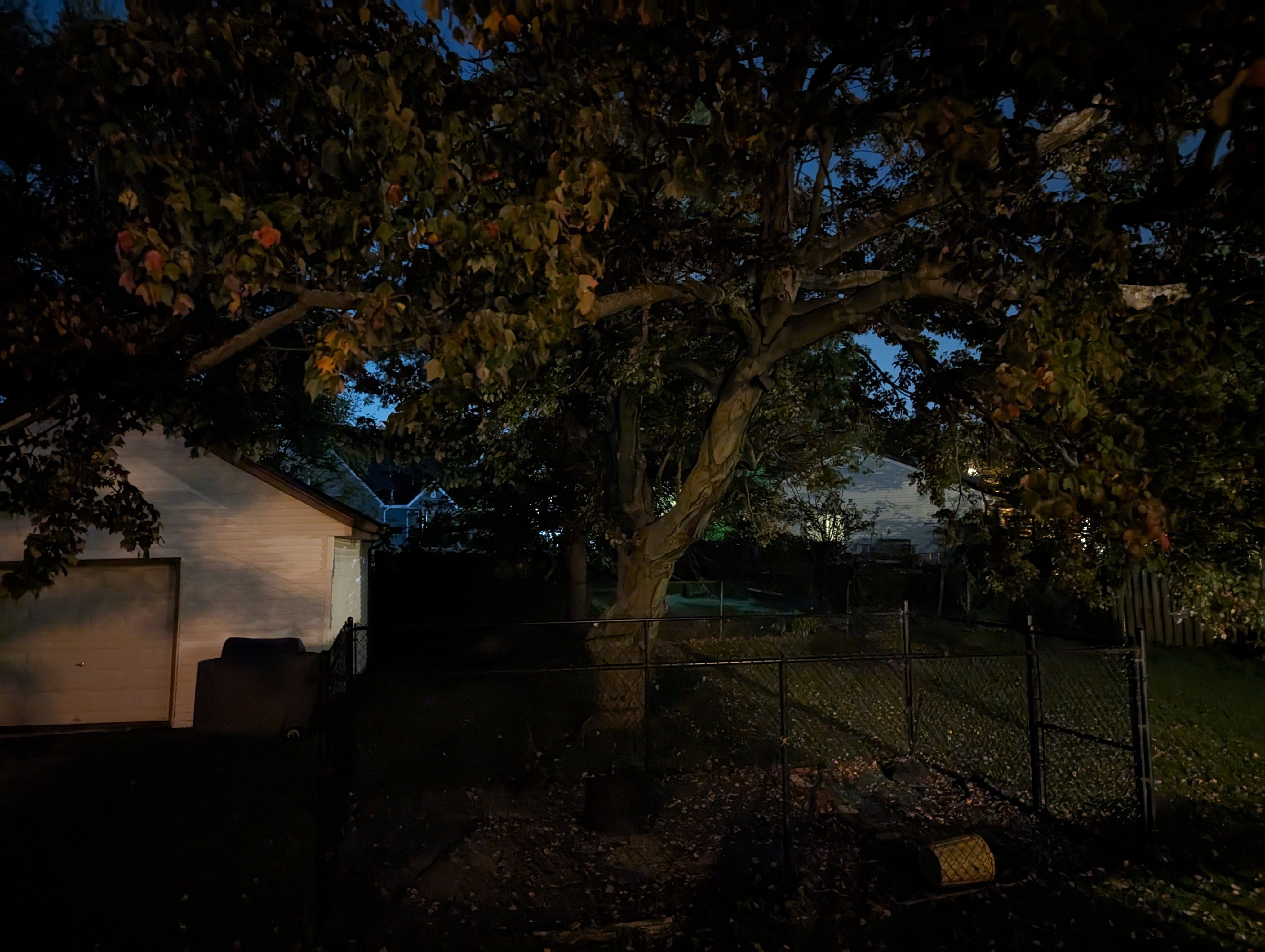
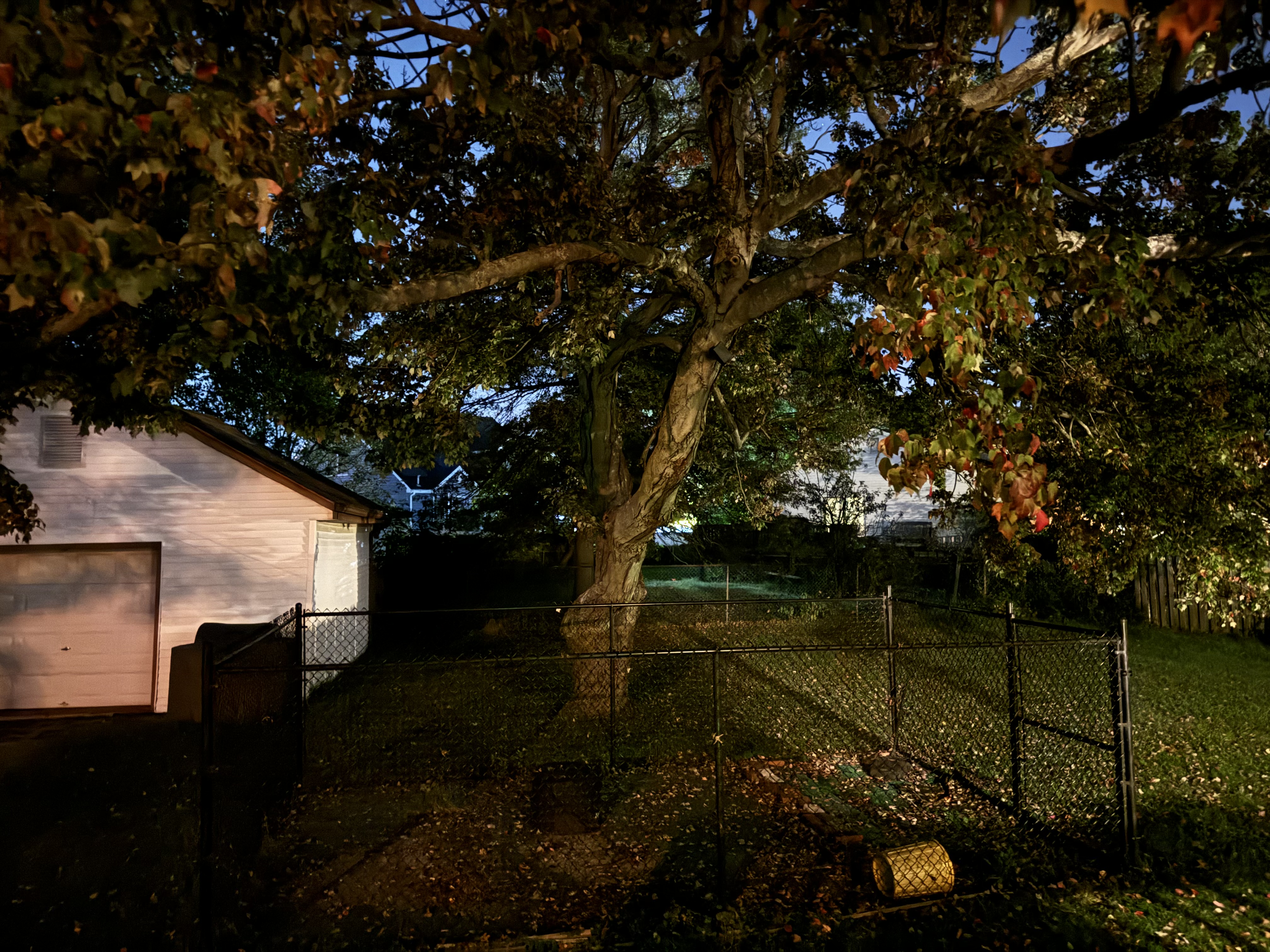
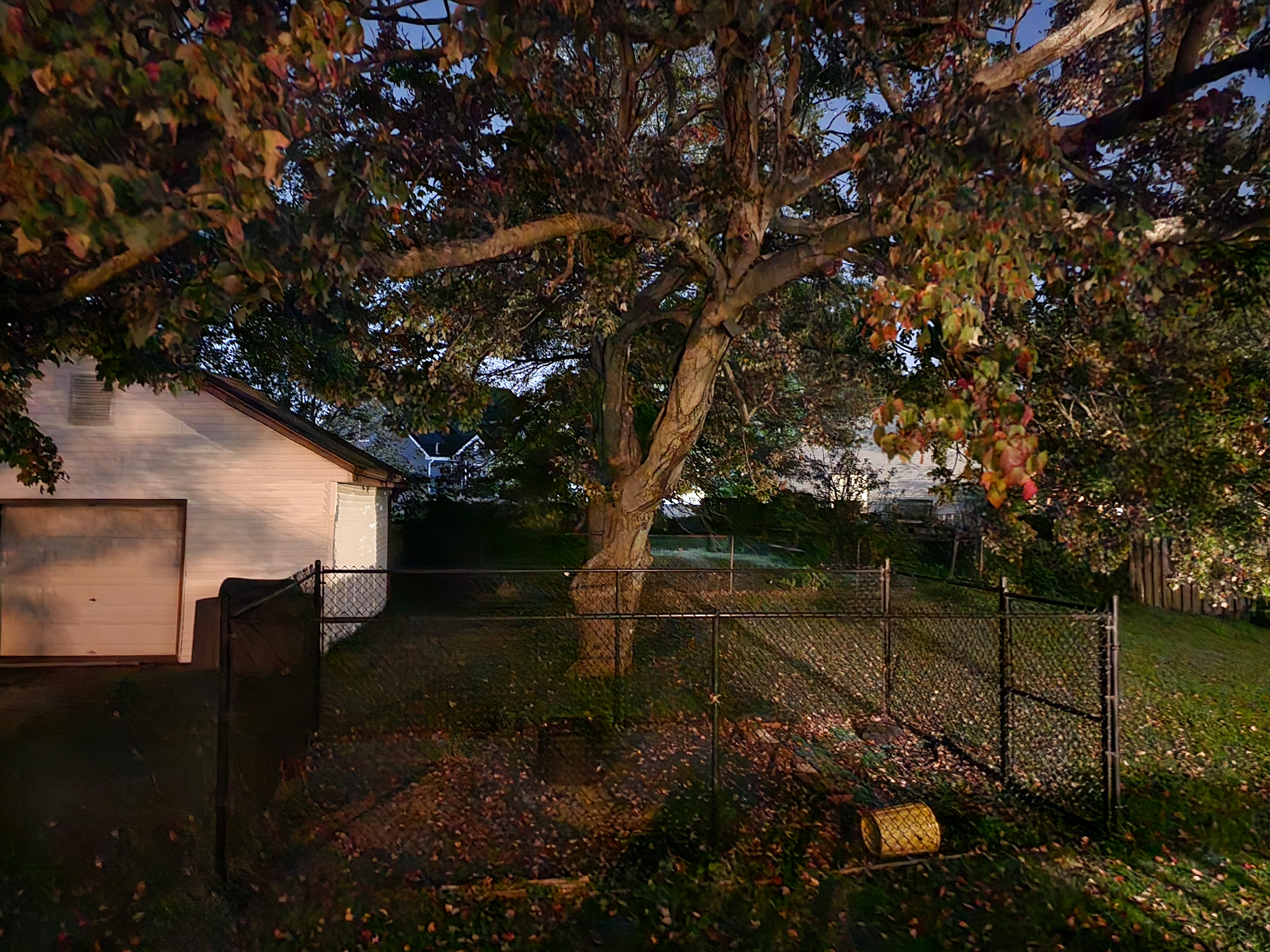
And lastly, I return to my backyard for my ultimate night time test to see if the Pixel 8 Pro’s night sight mode can expose the details hidden in extreme low light situations. What makes this particular shot so difficult for phones is that it’s essentially pitch black, with the only ambient light coming from far away lights. Aside from that, the general vicinity of the tree is pitch black.
Using their respective night modes, there’s a clear winner with the iPhone 15 Pro Max — mainly because it produces the brightest picture. The Galaxy S23 Ultra isn’t too far away either with a night time shot that looks like there’s a light source around to brighten up the tree. However, I can see that the chain link fence looks a bit softer compared to the iPhone 15 Pro Max.
Don’t get me wrong. The Pixel 8 Pro’s extreme low light shot still looks nice, but it’s underexposed most in the shadows — with details looking soft around the tree’s bark. Although, you could make a point that the Pixel 8 Pro produces the more realistic shot of what my eyes see.
Winner: iPhone 15 Pro Max
Astrophotography easter egg
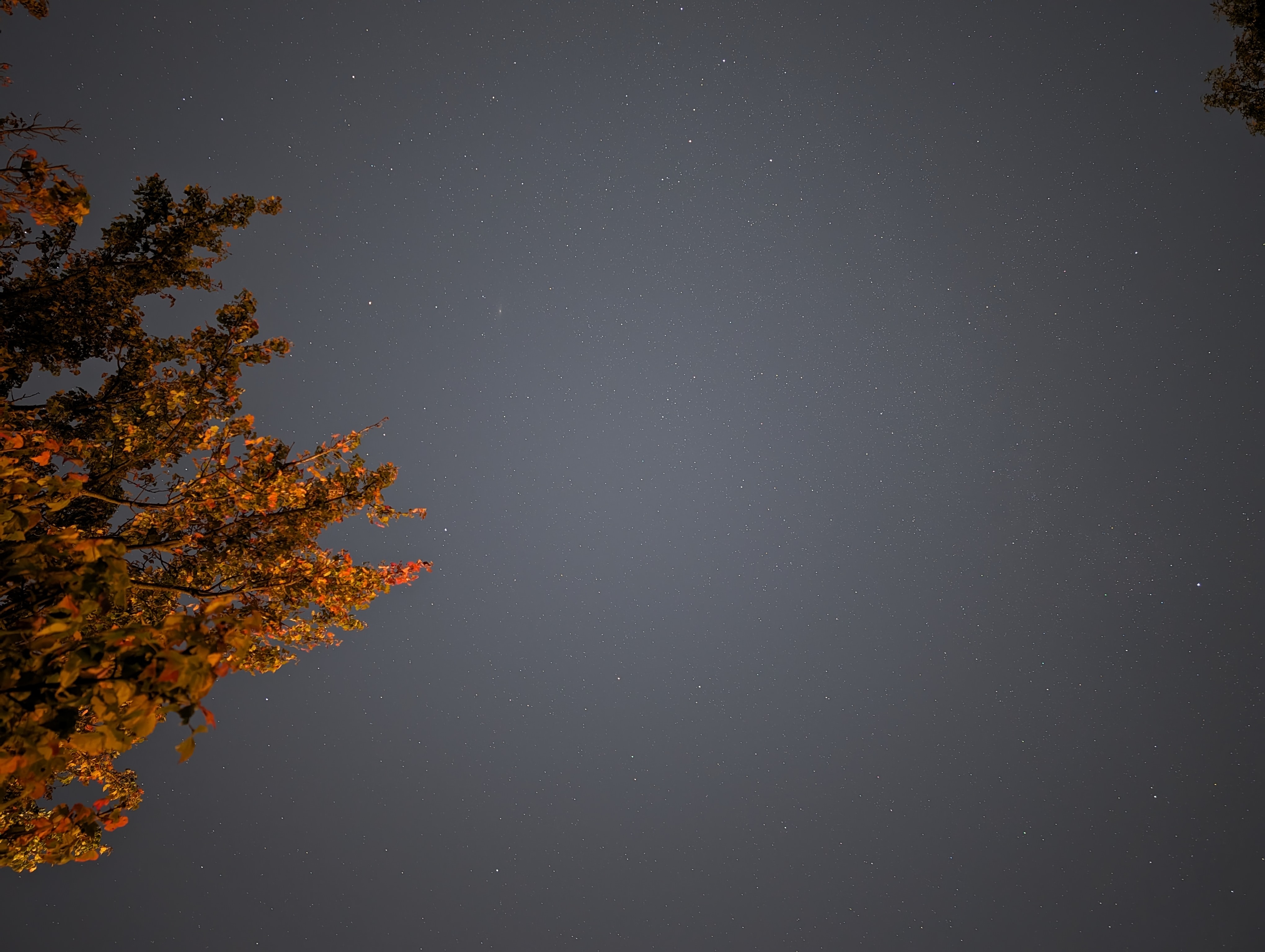
One surprising thing I love about the Pixel 8 Pro during my testing is that it takes outstanding astrophotography photos. What makes it better than other phones I’ve tested, like the iPhone 15 Pro Max and Galaxy S23 Ultra, is the option to take a long exposure image with astrophotography. In fact, it does this for 5 minutes — which lets the camera’s sensor absorb as much light as possible.
The end result is a night sky filled with stars. Mind you, it requires the Pixel 8 Pro to remain still throughout the shot, so a tripod or mount is necessary to pull this off. If you look close enough towards the middle-left, you should see a bright, fuzzy looking star. That’s the Andromeda galaxy. Phones don’t typically capture details such as this, but the Pixel 8 Pro does with its dedicated long exposure astrophotography.
Both the iPhone 15 Pro Max and Galaxy S23 Ultra are capable of astrophotography, but they're tied into their respective night modes. They also don't have the same 5 minute option for long exposure photography that the Pixel 8 Pro.
Pixel 8 Pro bottom line: Good, but room for improvement
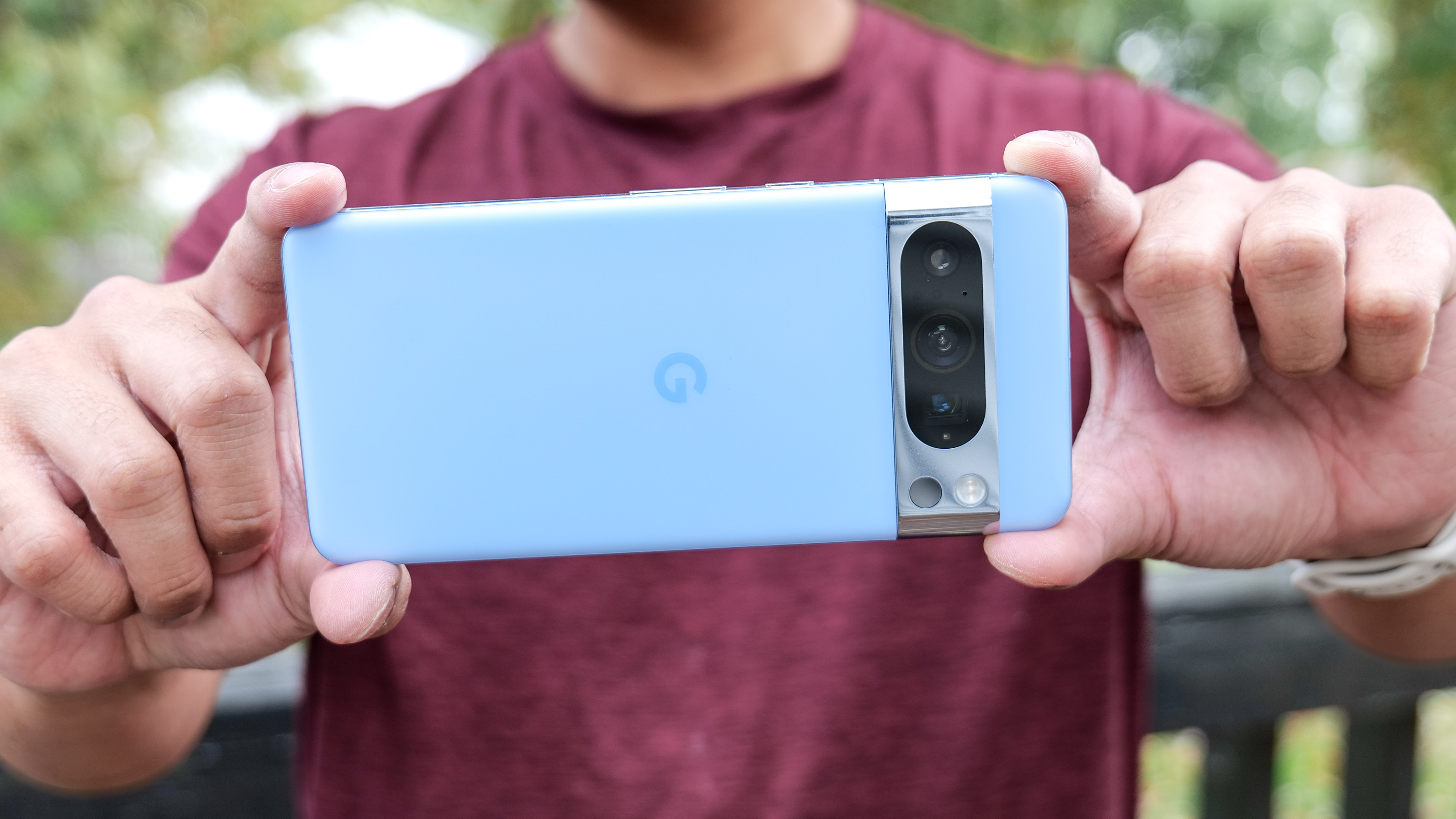
After looking through several comparison photos, I can say that the Pixel 8 Pro’s Night Sight mode is good, but there’s certainly room for improvement. The biggest disparity between it and its rivals center around its weaker dynamic range performance, noisier looking 4K video capture, and under-exposure with extreme low light situations.
I’m not saying it’s bad. That’s far from the truth and I think it’s able to muster enough strong compositions when the lighting is inadequate. I would also imagine that with enough tweaking with its RAW photos and 10-bit HDR video could help to boost its low light performance. There's more good news on the horizon with the Pixel 8 Pro’s exclusive Video Boost feature, which supposedly will enhance videos to draw out even more detail and clarity.
Nevertheless, I’m confident in the Pixel 8 Pro’s current low light performance based on these pics.
More from Tom's Guide
- Google Pixel 8 and Pixel 8 Pro battery life — here's how long they last
- 7 ways Pixel 8 Pro beats iPhone 15 Pro Max
- This Google Pixel 8 feature just came to older Pixels for free — try it now

John’s a senior editor covering phones for Tom’s Guide. He’s no stranger in this area having covered mobile phones and gadgets since 2008 when he started his career. On top of his editor duties, he’s a seasoned videographer being in front and behind the camera producing YouTube videos. Previously, he held editor roles with PhoneArena, Android Authority, Digital Trends, and SPY. Outside of tech, he enjoys producing mini documentaries and fun social clips for small businesses, enjoying the beach life at the Jersey Shore, and recently becoming a first time homeowner.
-
jeffc73oc I know you were testing the main camera app but if you use the S23 expert raw camera app you can select astrophotography and set up to 10 min exposure. You do need a tripod or stable setup stonework properly just like the pixel but it works very wellReply



